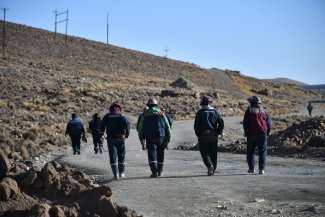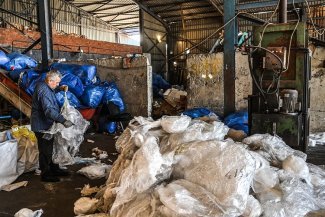Since 2002, the EU and some 75 countries from Africa, the Caribbean and the Pacific (the so-called ACP countries) have been negotiating “Economic Partnership Agreements” (EPAs).
EPAs would replace the unilateral trade preferences that the EU had been offering for decade, by World Trade Organisation (WTO) compatible reciprocal free trade agreements.
At the same time the EPAs would be “instruments for development” that would take the development constraints and needs of the ACP countries into account.
Yet ACP countries never really fancied the idea of opening their markets to the EU in order to maintain traditional market access.
Most ACP countries are Least Developed Countries (LDCs), with little capacity to compete with EU products and with a high dependency on import tariffs for their fiscal revenues.
From the beginning of the EPA negotiations, the EU and the ACP countries had different expectations and ambitions for the EPAs.
The EU adopted negotiating guidelines for very ambitious and comprehensive agreements that would include the liberalisation of services, investment and government procurement and commitments on intellectual property rights, competition and data protection.
The ACP countries adopted guidelines for EPAs that would be limited to securing market access for their merchandise exports and that would strengthen their institutional and productive capacities, and regional integration through enhanced cooperation.
The different expectations and the overloaded agenda were among the major reasons why negotiations did not advance.
By the end of 2007, the first date set forward for the conclusion of the EPAs, only the 15 Caribbean countries concluded negotiations for a comprehensive EPA.
In Africa and the Pacific, only a few partial interim agreements were initialled with sub-regions or individual countries creating or exacerbating regional divisions.
The EU’s ultimatum
Negotiations continued for regional agreements that would also improve several provisions in the interim EPAs which the ACP countries did not consider to be in their development interests. This included the freezing of tariffs, restrictions on export taxes, weak safeguards and markets access level, etc.
But since the EU continued to push for ambitious liberalisation commitments, negotiations continued at a snail’s pace or stalled entirely. Some countries dropped out of the negotiations altogether.
As a result, in 2011 the European Commission proposed to introduce a new deadline: if countries did not conclude new regional agreements or did not take necessary steps to ratify the 2007 interim EPAs, the EU would definitely withdraw preferential market access.
The new deadline was eventually set at 1 October 2014. It created great frustration and anger among ACP countries and civil society but as the date drew closer two African regions gave in; and so did Cameroon and Fiji.
The Eastern African Community however did not accept the terms of the EU. As a result, Kenya – as the only non-LCD in that configuration – will face new or increased taxes on its exports to Europe from 1 October (all LCDs enjoy duty- and quota-free access to the EU anyway).
With the new EPAs ACP countries have secured markets access for their traditional exports to Europe such as raw materials, coffee, cocoa, fruits and vegetables, the production of which is often still in European or foreign hands.
In exchange they will eliminate tariffs on the imports from the EU and they will freeze taxes on the exports to the EU.
The Geneva-based developing country think-thank South Centre has calculated that the loss of fiscal revenue from the liberalisation will be greater than the value of the increased tariffs that the ACP countries would face if they had lost preferential market access.
The South Centre has also shown that the neighbouring markets are much more important for ACP exports of manufactured goods than the EU market, implying that regional markets and integration are important for industrial development.
However, these exports of manufactured goods are vulnerable for EU competition.
Trade unions, farmer organisations and civil society fear that in the mid-term the EPAs have a negative social and economic impact as key manufacturing and agricultural products have not been excluded from liberalisation.
In other words, with the initialling of new EPAs and the ratification of older ones the withdrawal of preferences and immediate losses may have been avoided, but this may come at the expense of greater losses in the long term. In the end, the EPAs may turn out to be better for the development of the EU than of the ACP.








